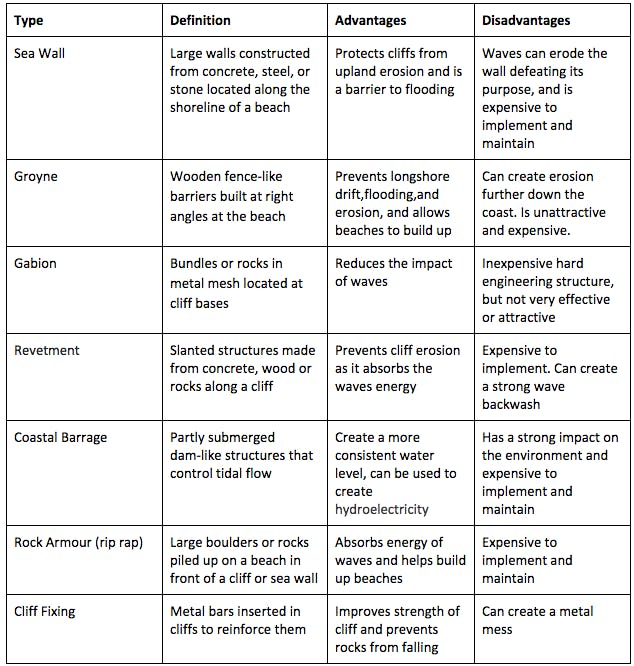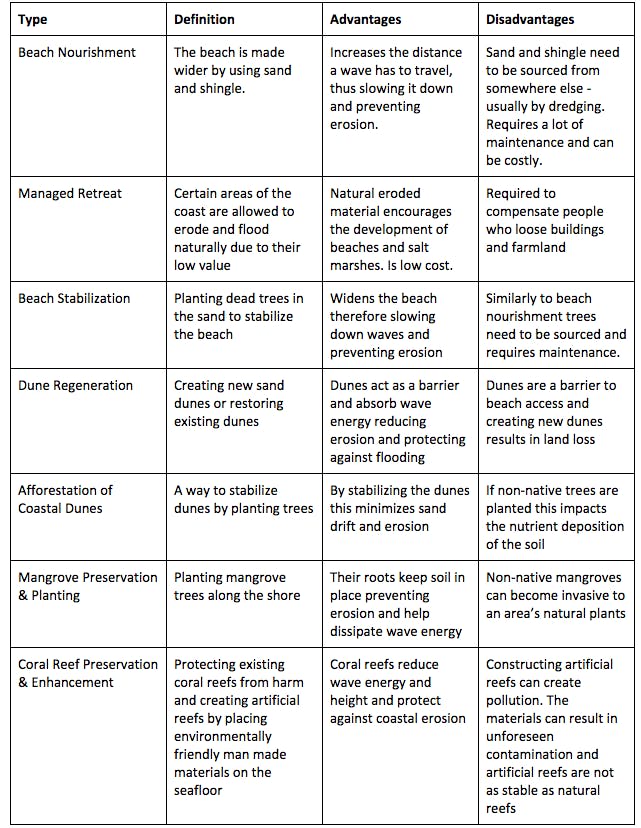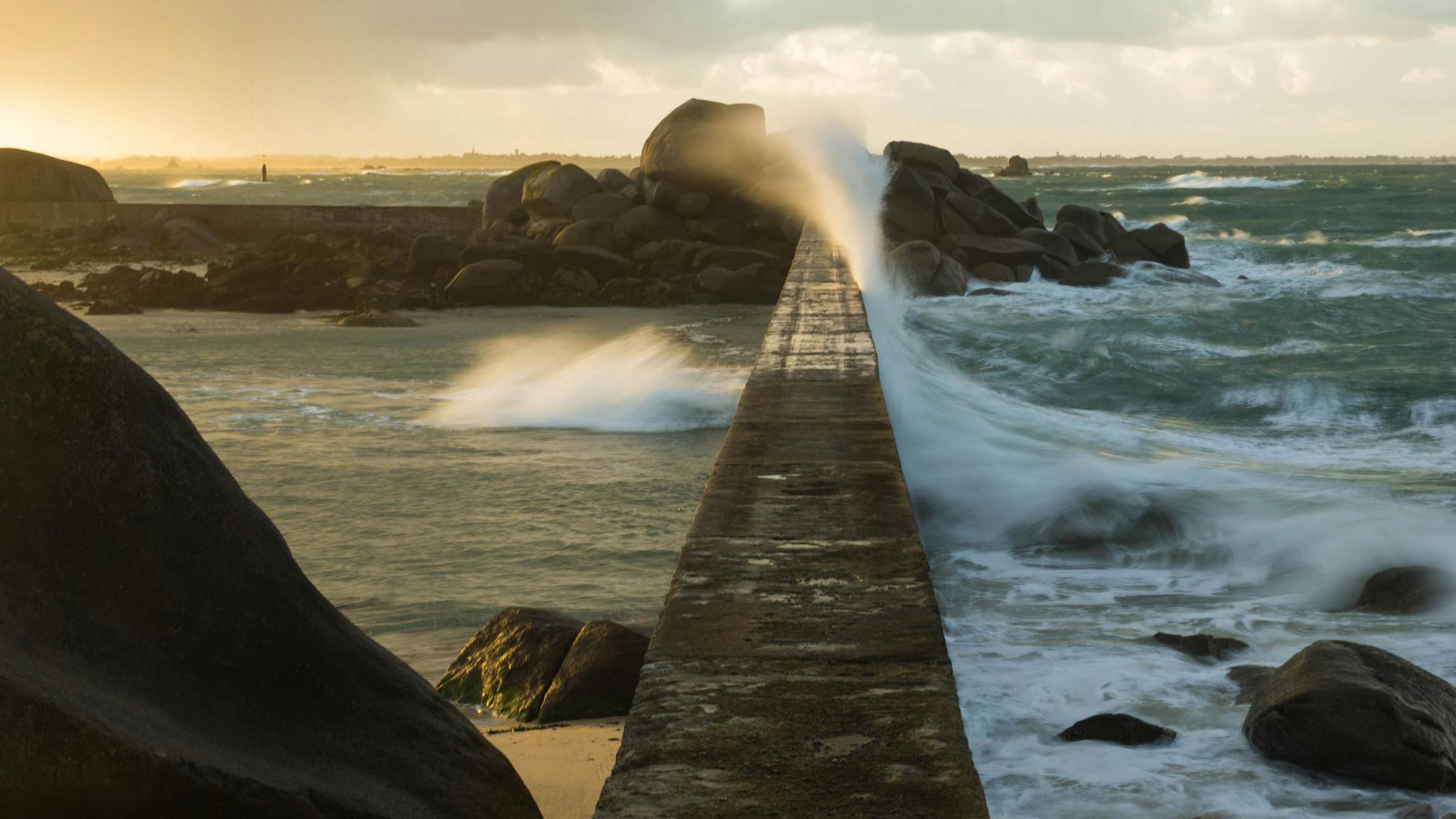There are two types of coastal management techniques, hard engineering, and soft engineering. We explain the difference and highlight the main types below.
Hard Engineering
Hard engineering is a coastal management technique used to protect coasts,by absorbing the energy of waves, preventing erosion and flooding. They are highly visible man-made structures used to stop or disrupt natural processes. These structures are expensive,short-term solutions and often they can have a negative impact on the environment. Installing hard engineering structures in one coastal location can have detrimental effects further down the coast.
Common Types of Hard Engineering

Soft Engineering
Soft engineering works with nature to protect the coast rather than trying to stop natural processes. It uses ecological principles and practises, therefore making less of a negative impact on the natural environment. Soft engineering is less expensive to implement and maintain, and creates more long-term, sustainable solutions than hard engineering projects.
Common Types of Soft Engineering


